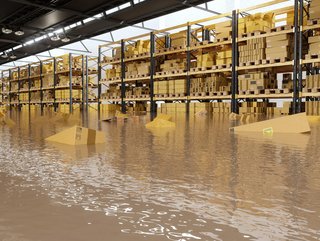Top 10: Extreme weather & supply chain resilience strategies

With climate change increasingly posing extreme-weather challenges to supply chains, a major joint study of 12,000 supplier sites in the United States, China and Taiwan has measured climate-related risks being faced by around 100 original equipment manufacturers in the high tech, auto and consumer goods industries.
The Harvard Business Review (HBV) study - conducted by the University of Maryland and supply chain-mapping firm, Resilinc - suggests just 11% of suppliers are fully prepared for weather-related disruption.
The study also found half (49%) of the surveyed companies in the US had experienced an increase in climate volatility, and that in China and Taiwan this figure was a massive 93%.
The HBV study suggests numerous ways organisations can increase supply chain resilience in the face of extreme weather. Here, we include these - and other - strategies to keep supply on track, even if Mother Nature is doing her best to disrupt operations.
Extreme weather & supply resilience: 10. Integrate tech systems
Climate monitoring and predictive tools can allow for decades of data to be put to use in specific sites and locations, allowing users to understand essential vulnerabilities and risks. Such systems are most powerful when marshalled by experts who can interpret climate data and provide actionable, real-time guidance.
Extreme weather & supply resilience: 9. Rethink manufacturing
Taiwan is the biggest manufacturer of computer chips and is one of the most seismically active areas in the world. It is also prone to typhoons. China is a manufacturing powerhouse across most sectors, and is prone to extreme flooding, plus it is still in the grips of Covid lockdowns - with little sign that this will change any time soon. Reshoring manufacturing from volatile areas to less volatile ones nearer - or at - home can mitigate risk.
Extreme weather & supply resilience: 8. Have the right mindset
Every business should have an ‘awareness statement’ as well as a mission statement. Such a statement should recognise that the supply chains of the future need the interdependency, interconnectedness and the intelligence to predict disruption before it occurs. This is pretty much the silver bullet of global logistics, and the approach must be part of company DNA, so that the necessary thinking is in place to pave the way for visibility and automation solutions.
Extreme weather & supply resilience: 7. Manage upstream risk
A weakness of many business continuity plans is that they often focus solely on nearby locations. Proactively managing supplier networks can allow businesses to more quickly identify alternative sources, and also switch to new suppliers more efficiently.
Extreme weather & supply resilience: 6. Collaborate with suppliers
Companies can contractually insist that suppliers include business continuity plans - and they should. Suppliers are vulnerable not only to disruption from weather events but from all manner of things, including intervention from regulatory bodies and also environmental laws. Backup plans, alternative production sites, and recovery timeframes should all be in place. To ensure this is the case, collaborate with suppliers and help them understand their vulnerabilities to disruption. Supplier contracts should also insist business continuity plans are tested annually.
Extreme weather & supply resilience: 5. Data
Using data can allow companies to retain competitive advantage in the face of a hurricane, tornado or flood. With a clear picture, businesses can protect high-risk areas by, for example, designing vulnerable facilities to withstand extreme weather events. Even if a facility or warehouse is temporarily shut down by a climatic event, if an organisation can get it back online quickly then lost market share will be minimised.
Extreme weather & supply resilience: 4. Tech ecosystem
Many of the solutions that can help mitigate against extreme weather events already exist. Leveraging them requires that business cultivate and nurture a strong ecosystem of tech firms. Many tech companies offer bespoke visibility and automation supply chain solutions that target key problems in supply chain, and they are small enough to move quickly on proof of concept and implementation.
Extreme weather & supply resilience: 3. Scenario planning
Supply chains are often long and complex, and businesses should analyse and compare different supply network setups and sources, with a view to managing risk more effectively. Within this, the impact of climatic events can be studied and assessed across multiple configurations The HBV study found that climate models are frequently volatile, and lead to unexpected risks - meaning some of the measures needed to counteract them can be counterintuitive.
Extreme weather & supply resilience: 2. Assess risk
After establishing end-to-end visibility of the supply chain, the next step is to study these sites’ vulnerabilities, including not just extreme weather but also natural disasters, local economic conditions, geopolitical risks (war, security, corruption), proximity to both supplier and customer, energy access reliability and the availability of labour and natural resources. This level of risk assessment helps organisations prioritise investment.
Extreme weather & supply resilience: 1. Map the supply chain
Identify the direct and indirect locations that are needed to support manufacturing, warehousing, distribution and repair. Tier one suppliers usually have sound strategic control and most organisations have good visibility over their processes. It is suppliers in tier two and beyond that are most likely to be affected by weather disruptions, because here companies often share suppliers.
- Supply Chain Problems Sees Partnerships Programme GrowOperations
- Blue Yonder & Moodys Warn of Long-Term Red Sea DamageSupply Chain Risk Management
- Firms 'turning to regional suppliers and manufacturers'Supply Chain Risk Management
- Supply chain tech roundup: Avery Denison, Cargill, OlamTechnology






